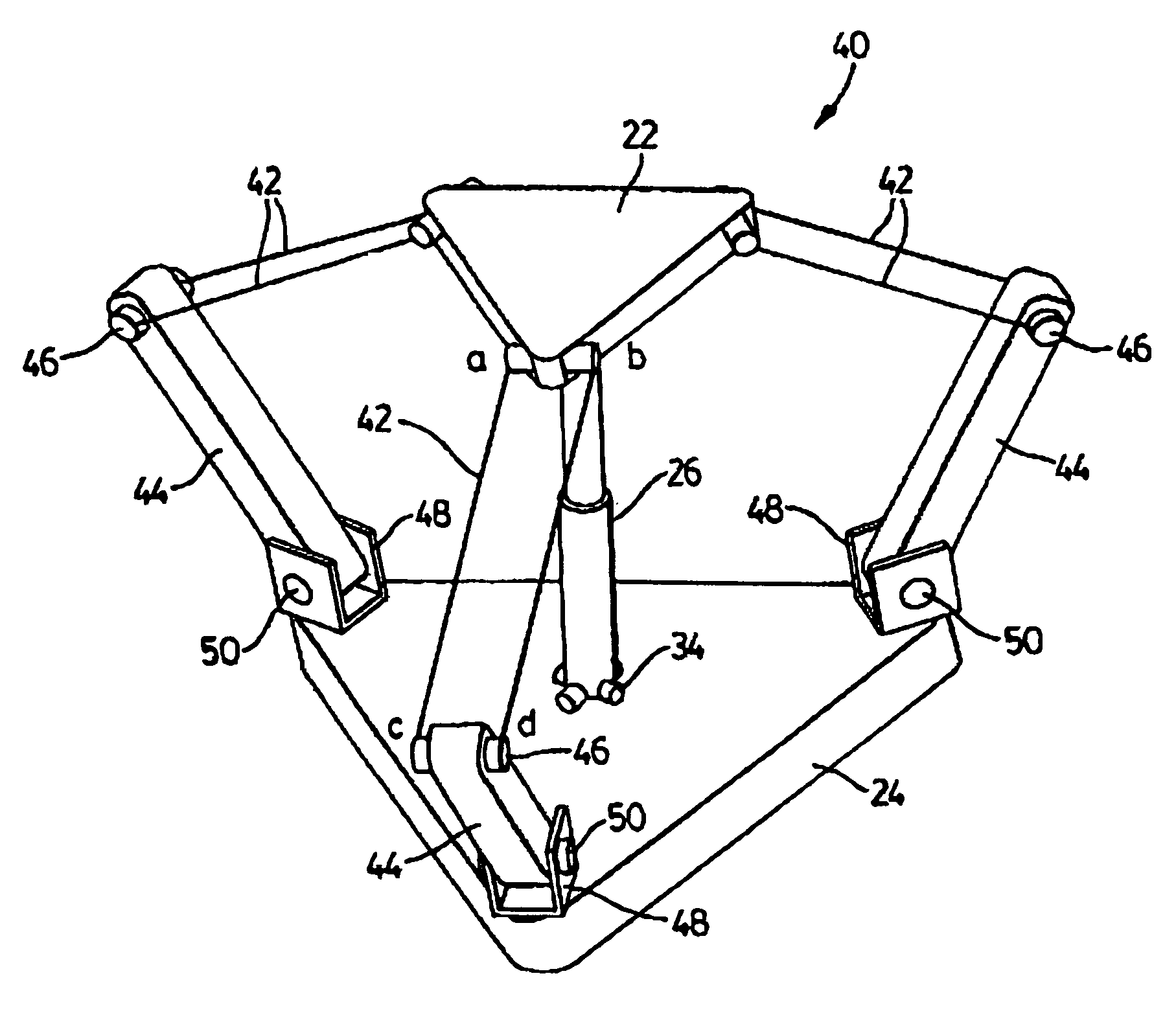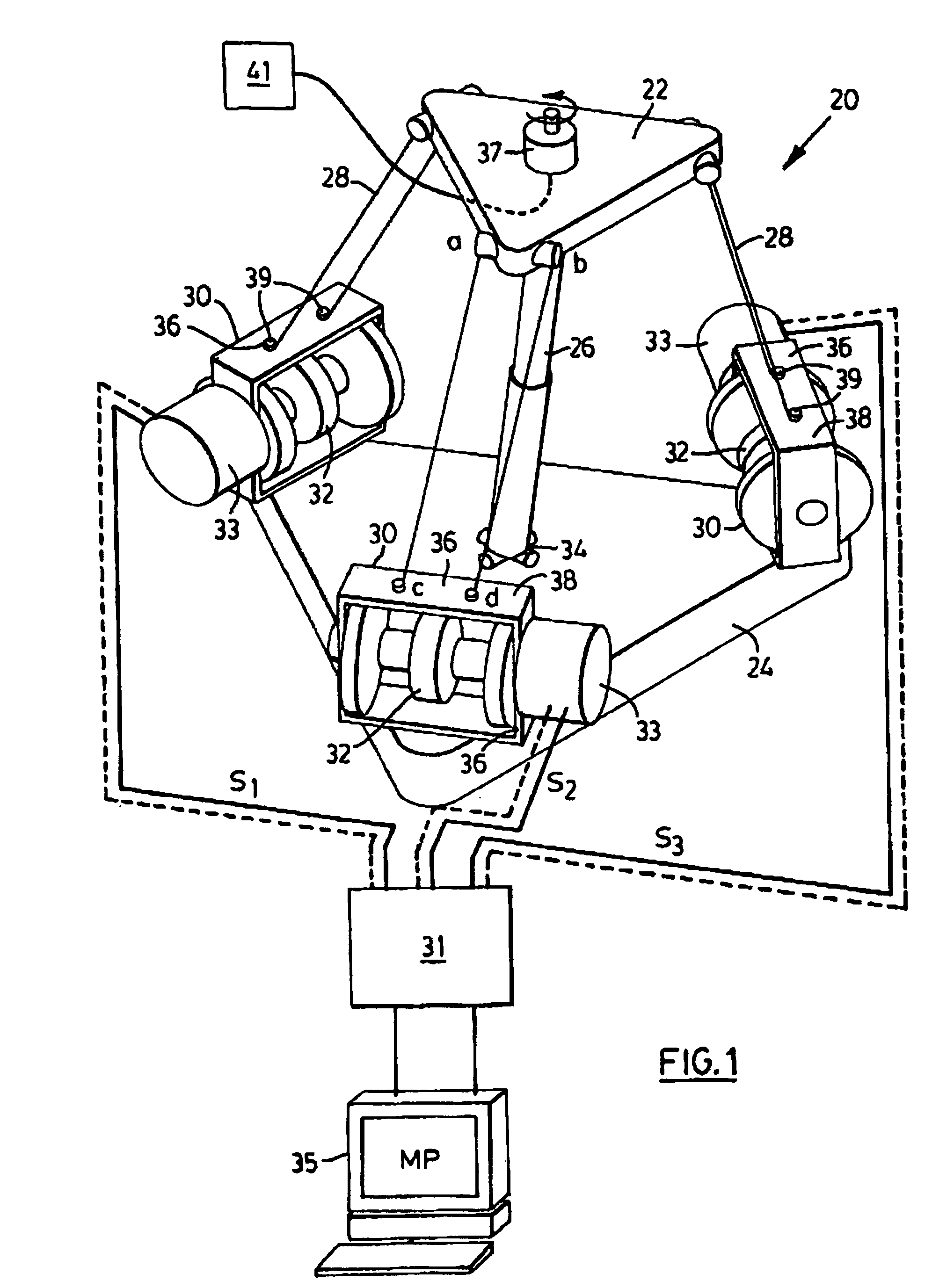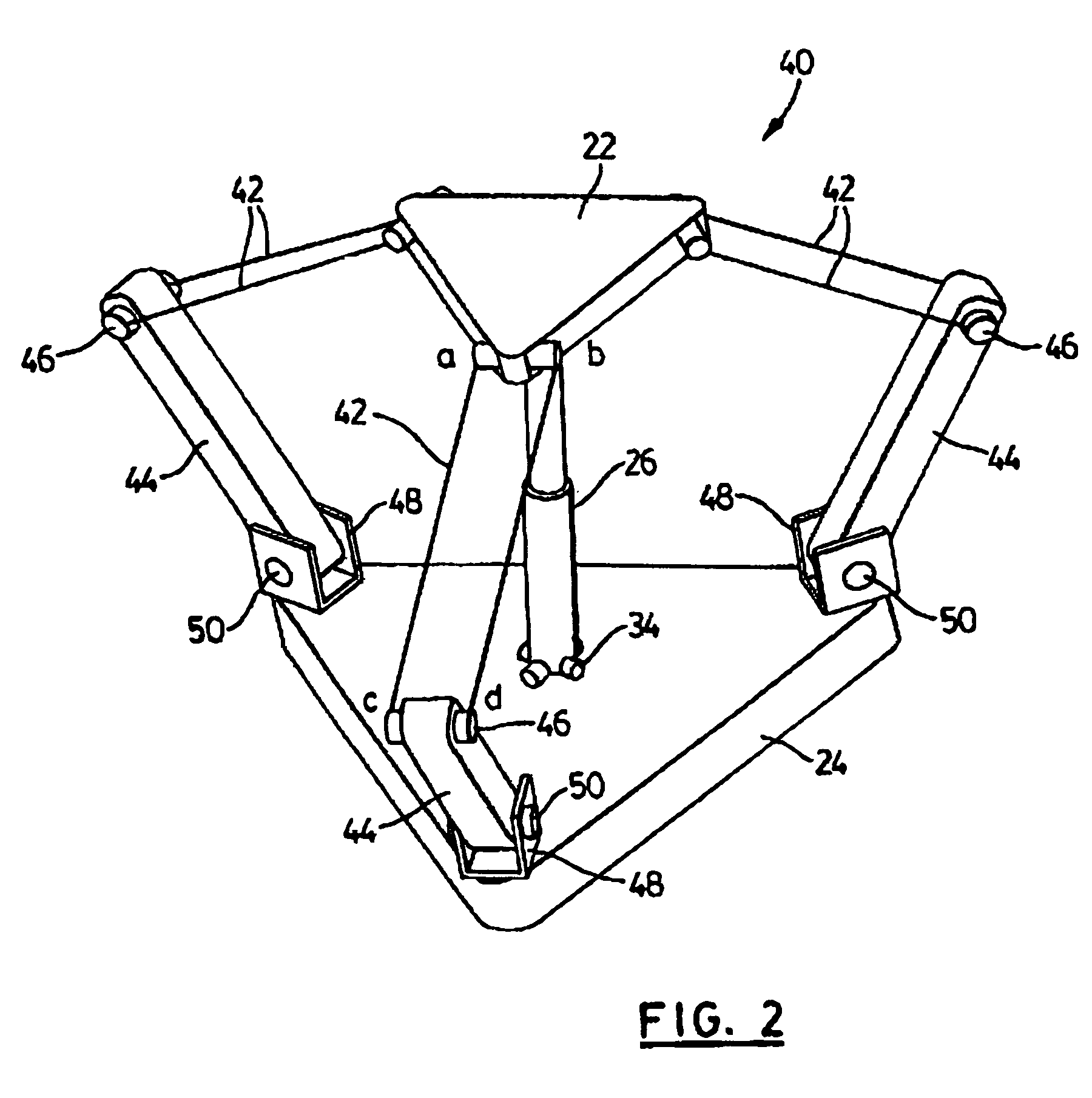Light weight parallel manipulators using active/passive cables
a technology of active/passive parallel manipulators and light weight cables, which is applied in the direction of manufacturing tools, arms, transportation and packaging, etc., can solve the problems of increasing the error associated with the position of the end effector
- Summary
- Abstract
- Description
- Claims
- Application Information
AI Technical Summary
Benefits of technology
Problems solved by technology
Method used
Image
Examples
Embodiment Construction
1. Three-degree-of-freedom Parallel Mechanism using Active Cables
[0076]A three-degree-of-freedom parallel robotic mechanism using active cables constructed in accordance with the present invention is shown generally at 20 in FIG. 1 and includes a moving platform 22 that is attached to base platform 24 using an extensible or telescoping central post 26 and three sets of parallel cables 28 with one end of each of cable attached to platform 22 and the other ends of each pair of cables attached to an associated winch assembly 30. Each winch assembly 30 includes a drum 32 mounted for rotation in a frame 36 which is attached to the base 24 to keep the drum 32 in place and also to guide the cables 28 to the drum via two holes 39 located in the top plate 38 of the frame 36. The extensible post 26 is attached to the platform 22 (end-effector) and base 24 by universal joints 34 at both ends of the post to prevent the rotation of the moving platform 22. The extensible center post 26 applies a ...
PUM
 Login to View More
Login to View More Abstract
Description
Claims
Application Information
 Login to View More
Login to View More - R&D
- Intellectual Property
- Life Sciences
- Materials
- Tech Scout
- Unparalleled Data Quality
- Higher Quality Content
- 60% Fewer Hallucinations
Browse by: Latest US Patents, China's latest patents, Technical Efficacy Thesaurus, Application Domain, Technology Topic, Popular Technical Reports.
© 2025 PatSnap. All rights reserved.Legal|Privacy policy|Modern Slavery Act Transparency Statement|Sitemap|About US| Contact US: help@patsnap.com



